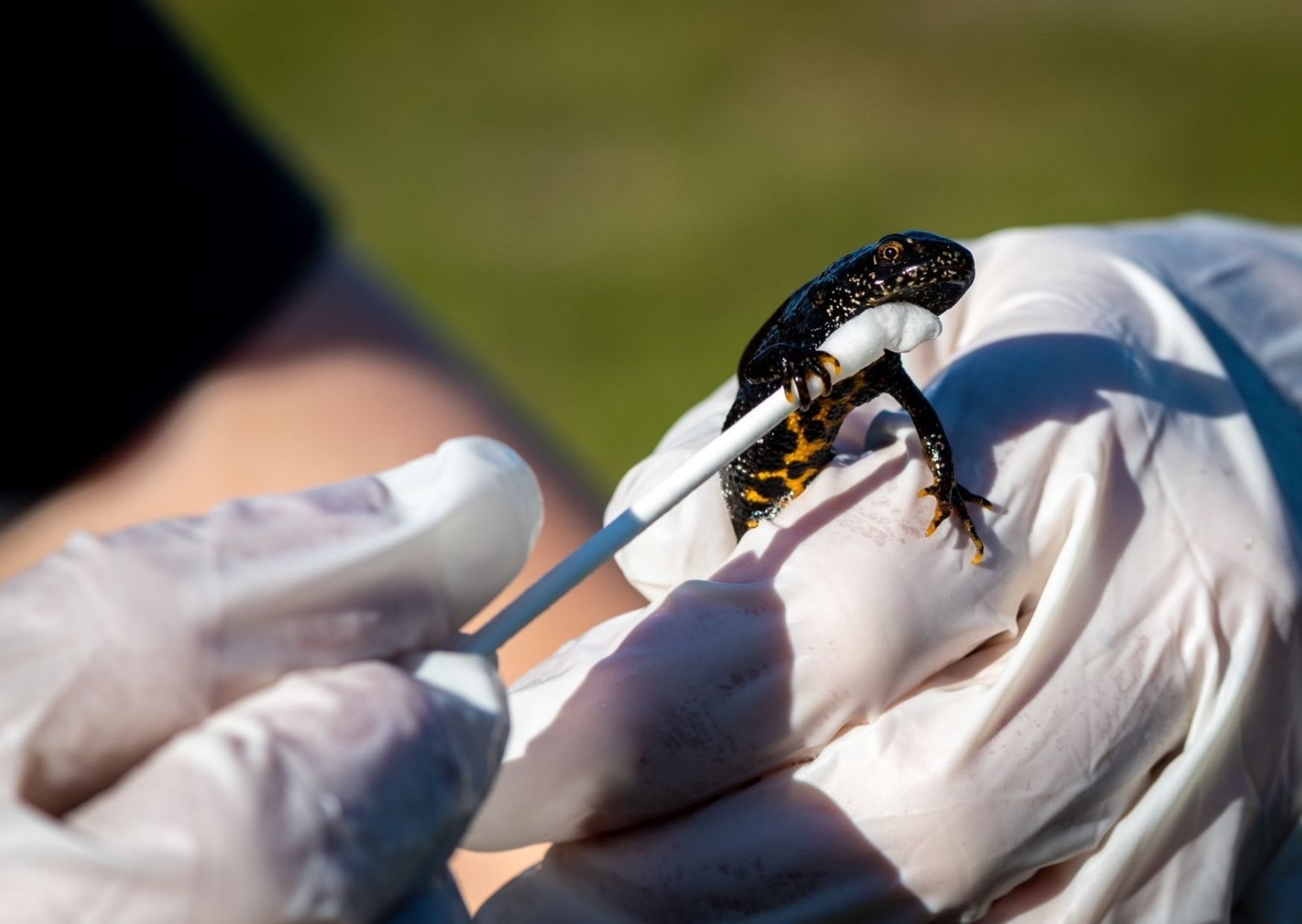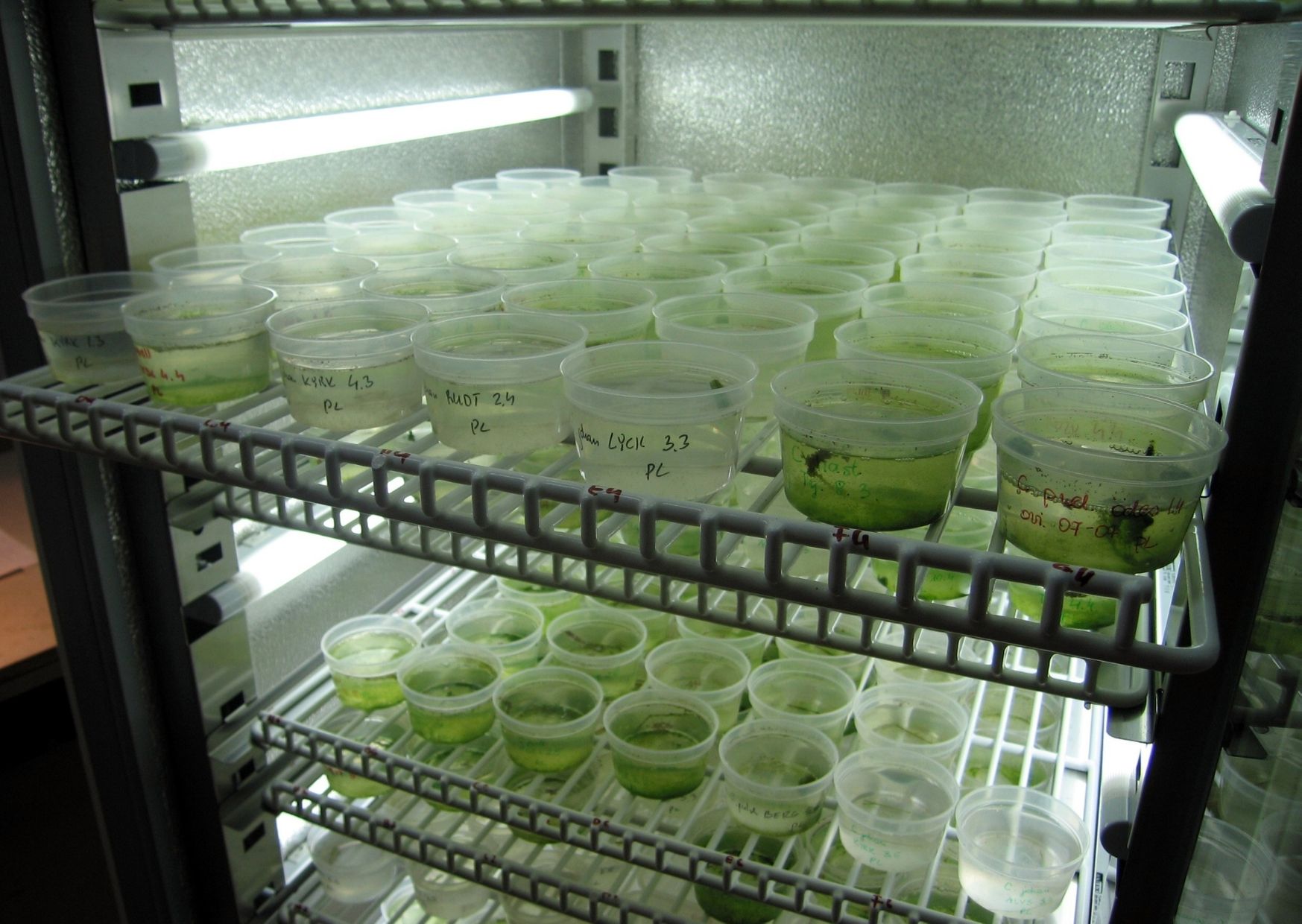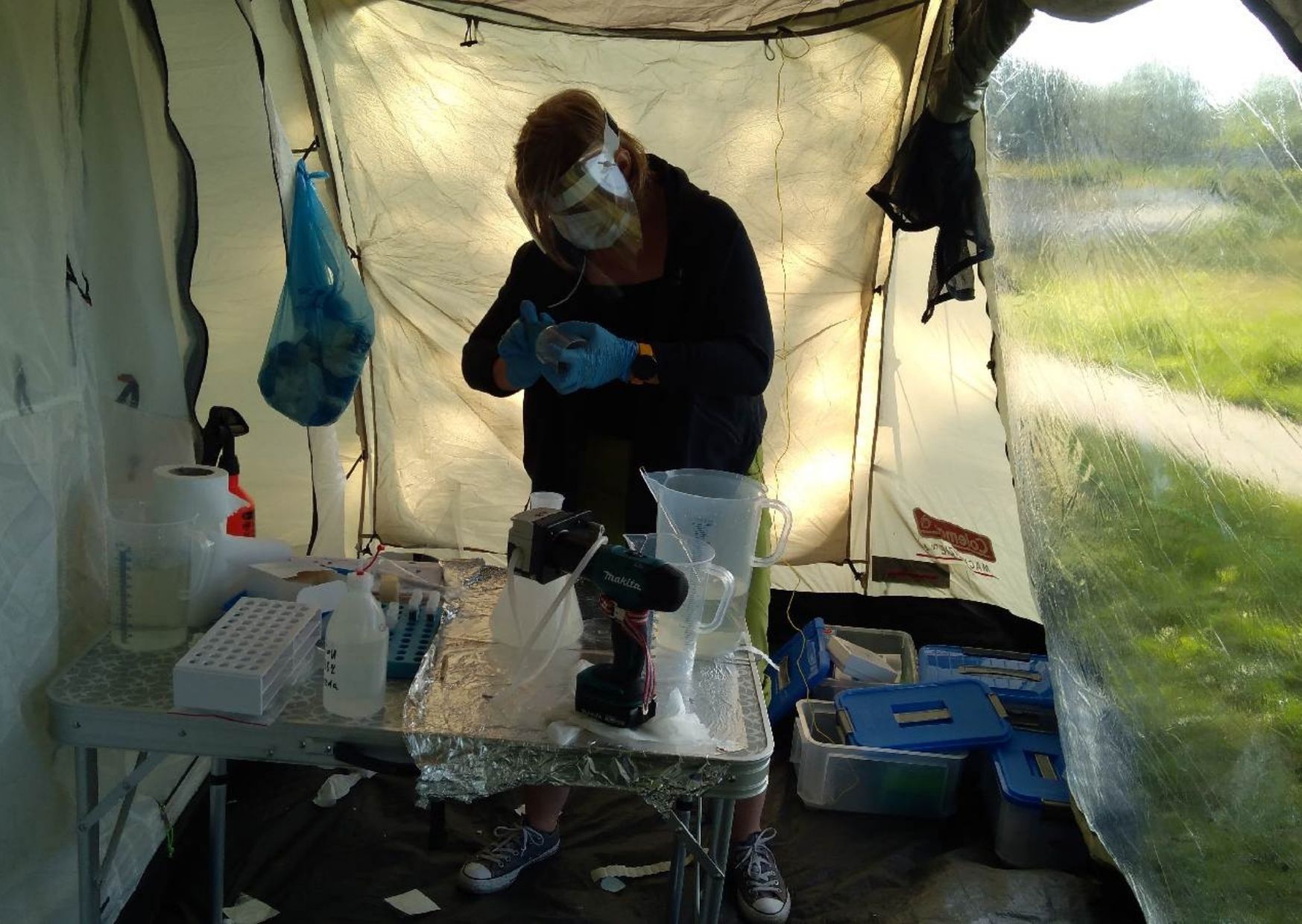 Pond ecosystems are hotspots of biodiversity often containing many rare and protected species that are not commonly found elsewhere. However, very little effort has been put into pond monitoring and management and pond ecosystems are hence relatively poorly understood. The sample design in ECOPOND includes six geographic locations, spanning the south of Poland to the middle of Norway, where we will sample five replicates of urban and rural ponds in close geographic proximity, making it possible to test for the impact of urbanization on biodiversity and biotic homogenization across latitude. We will sample all ponds at two different time periods (n=150), making it possible to assess seasonality in biodiversity. Traditional sampling using morphological species identification would be close to impossible for a large set of sites and sampling times, and repeated collections of individuals can potentially cause ecosystem damage.
Pond ecosystems are hotspots of biodiversity often containing many rare and protected species that are not commonly found elsewhere. However, very little effort has been put into pond monitoring and management and pond ecosystems are hence relatively poorly understood. The sample design in ECOPOND includes six geographic locations, spanning the south of Poland to the middle of Norway, where we will sample five replicates of urban and rural ponds in close geographic proximity, making it possible to test for the impact of urbanization on biodiversity and biotic homogenization across latitude. We will sample all ponds at two different time periods (n=150), making it possible to assess seasonality in biodiversity. Traditional sampling using morphological species identification would be close to impossible for a large set of sites and sampling times, and repeated collections of individuals can potentially cause ecosystem damage.
Therefore, ECOPOND will utilize biodiversity screening methods that are not only manageable for a large number of sites within a short time frame, but also give more detailed results on all the sampled taxa at the same time. These methods come from filtering and extracting genetic material  obtained directly from environmental samples without any obvious signs of the biological source material. The genetic material used in such assays is often referred to as environmental DNA (eDNA), although recently there has been much interest in the lesser-used environmental RNA (eRNA). The extracted eDNA and eRNA fragments will be amplified with the use of several selected markers and the products compared to libraries of genetic sequences of known specific provenance in order to ascertain an estimate of the species composition of the water samples (metabarcoding). We will apply markers for vertebrates, invertebrates, fungi and bacteria in all samples. Comparisons between eDNA and eRNA metabarcoding are hypothesized to allow inference
obtained directly from environmental samples without any obvious signs of the biological source material. The genetic material used in such assays is often referred to as environmental DNA (eDNA), although recently there has been much interest in the lesser-used environmental RNA (eRNA). The extracted eDNA and eRNA fragments will be amplified with the use of several selected markers and the products compared to libraries of genetic sequences of known specific provenance in order to ascertain an estimate of the species composition of the water samples (metabarcoding). We will apply markers for vertebrates, invertebrates, fungi and bacteria in all samples. Comparisons between eDNA and eRNA metabarcoding are hypothesized to allow inference  between present and past diversity, as eRNA is thought to be only available from live organisms in the community. Few studies have compared the results of eDNA and eRNA in species richness and there is hence a pressing need for further studies involving both molecules.
between present and past diversity, as eRNA is thought to be only available from live organisms in the community. Few studies have compared the results of eDNA and eRNA in species richness and there is hence a pressing need for further studies involving both molecules.
Invasive alien species (IAS) can have devastating impacts on native species and ecosystems but their presence and effect can be hard to detect, especially in their early phases of settlement. ECOPOND aims at disentangling effects that selected IAS can have on whole ecosystems, ascertain which abiotic and biotic factors associate with the alien invasions and develop a method that can contribute towards an early-warning system of evaluating threats to ecosystem status.
One of the focus species will be the parasitic fungus Batrachochytrium dendrobatidis (Bd), an infectious fungal pathogen that has caused a number of amphibian declines and extinctions. The European amphibians seem less affected by the parasite at present, but the fungi could directly reduce  the infected amphibian’s overall fitness by reducing the microbiotic diversity on their skin, which in many cases acts as a second immune system. ECOPOND will therefore provide data on genomic variation for two amphibian species: the smooth newt (Lissotriton vulgaris) and the common toad (Bufo bufo). We will investigate populations of these species inhabiting ponds that are infected and not infected by Bd as well as collect data on their skin microbes (identified using metabarcoding). We will also contrast the genomic diversity between the replicated urban and rural setup and look for repeatable genomic changes. This setup will also be compared for the genomic variation for a potential native prey,
the infected amphibian’s overall fitness by reducing the microbiotic diversity on their skin, which in many cases acts as a second immune system. ECOPOND will therefore provide data on genomic variation for two amphibian species: the smooth newt (Lissotriton vulgaris) and the common toad (Bufo bufo). We will investigate populations of these species inhabiting ponds that are infected and not infected by Bd as well as collect data on their skin microbes (identified using metabarcoding). We will also contrast the genomic diversity between the replicated urban and rural setup and look for repeatable genomic changes. This setup will also be compared for the genomic variation for a potential native prey, the blue-tailed dragonfly (Ischnura elegans), that lives in urban and rural sites that are shared (or not shared) by invasive alien predators. All ponds will also be analyzed for over 20 water quality parameters and include data on a range of site characteristics that will be used as explanatory variables in all statistical models.
the blue-tailed dragonfly (Ischnura elegans), that lives in urban and rural sites that are shared (or not shared) by invasive alien predators. All ponds will also be analyzed for over 20 water quality parameters and include data on a range of site characteristics that will be used as explanatory variables in all statistical models.
The ECOPOND project will provide detailed knowledge on the biodiversity patterns of vertebrates, invertebrates, fungi and bacteria, as well as the genomic composition of the species found across ponds over a geographical and urbanization gradients. This will help explain the natural role of small water bodies and provide e a better insights in changes in water bodies biodiversity.


